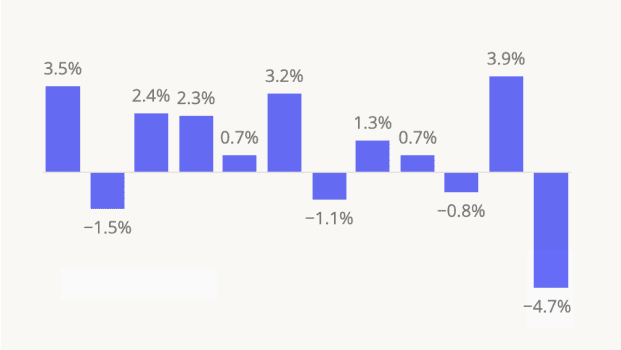Brick-and-mortar retail continues to evolve – and while consumers have always turned to physical commercial spaces to gather, shop, eat, and be entertained, we predict that 2025 will be the year of brick and mortar stores as Brand Amplifiers. What do we mean by that? Simply put, the more we have options to do things online – be it shop, communicate, work, or play – the more we also crave the opportunity to do these things in the physical world, and brick and mortar is at the center of making these experiences larger than life. It’s no surprise, then, that even digitally native Gen Z is still regularly visiting physical stores.
We’ve written extensively about the importance of brick-and-mortar locations for digital brands and of standalone boutiques for wholesale brands – within the four walls of a branded store, marketers have the ability to control the narrative. From the visual merchandising to the customer associate, the brand’s personality and DNA can really come to life.
The recent Meta Popup Lab on Melrose Ave in the West Hollywood Design District – created to test its Ray-Ban smart glasses – offers a great example of brick and mortar’s potential to amplify digital brands and make them come to life. While the venue only opened for a little under two months, visitation data and audience profile analysis reveals the consumer demand for the experience as well as the brand amplification value that Meta received from the pop up.
Meta Popup Lab Drew Significant Weekend Visits
Weekends tend to be the most popular recreation days, as that’s when most people have free time to shop and explore. And looking at visitation patterns shows that this trend held true at the Meta Popup Lab and in the wider Design District retail corridor in which the pop up was operating. But the Meta Popup Lab actually received a larger share of its visits on Saturdays and Sundays compared to the wider shopping corridor – indicating that visitors were dedicating precious weekend time to visit the pop up and make sure they could get the full Meta experience without feeling rushed by their various weekday constraints.
Most Visitors Stayed Long Enough to Make a Purchase Decision
Diving into the visit duration at Meta Lab reveals that over a quarter of visits lasted between 15-29 minutes, and roughly 1 in 6 lasted 30-44 minutes. That time frame is enough to try on some frames, speak to a customer associate, and make a purchase decision.
Young and Affluent Visitor Base
Meta Lab also drew more visitors from trade areas with higher income and smaller households compared to the wider West Hollywood Design District. This indicates that, as may be expected, Meta Lab attracted a relatively young and affluent audience – tech-savvy visitors with the disposable income to spend.
Physical Pop Ups Bring Digital Brands to Life
The success of the Meta Popup Lab underscores the potential of brick-and-mortar spaces as brand amplifiers, transforming digital concepts into immersive, tangible experiences. As consumers continue to seek deeper connections with brands, physical retail offers a unique opportunity to engage, educate, and excite in ways that digital alone cannot. In an era where online and offline worlds are increasingly intertwined, brands that strategically leverage physical spaces will stand out by creating lasting impressions that go beyond the screen.




.png)
.png)

.png)
.png)














.svg)